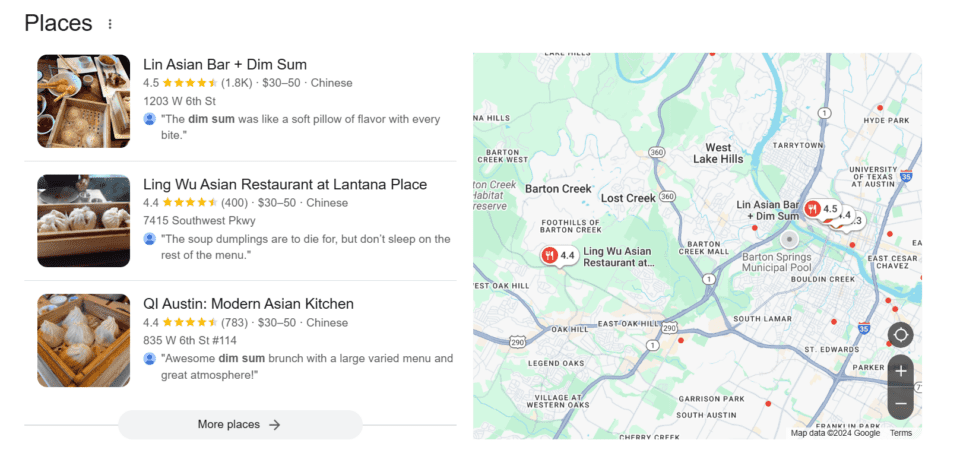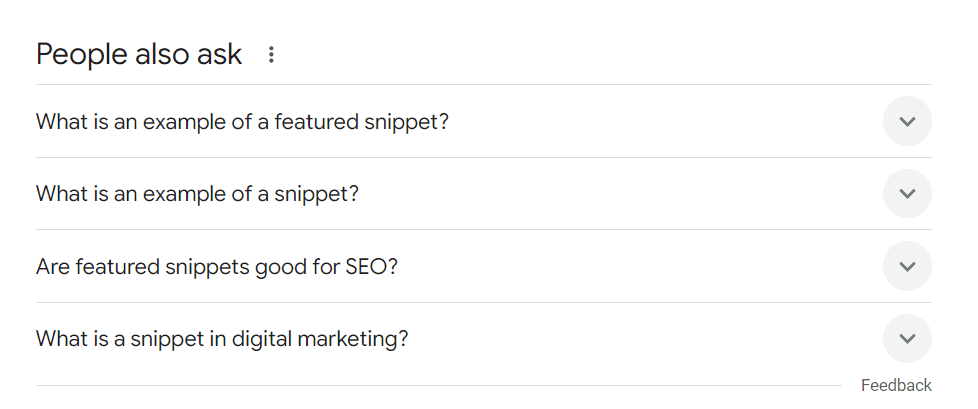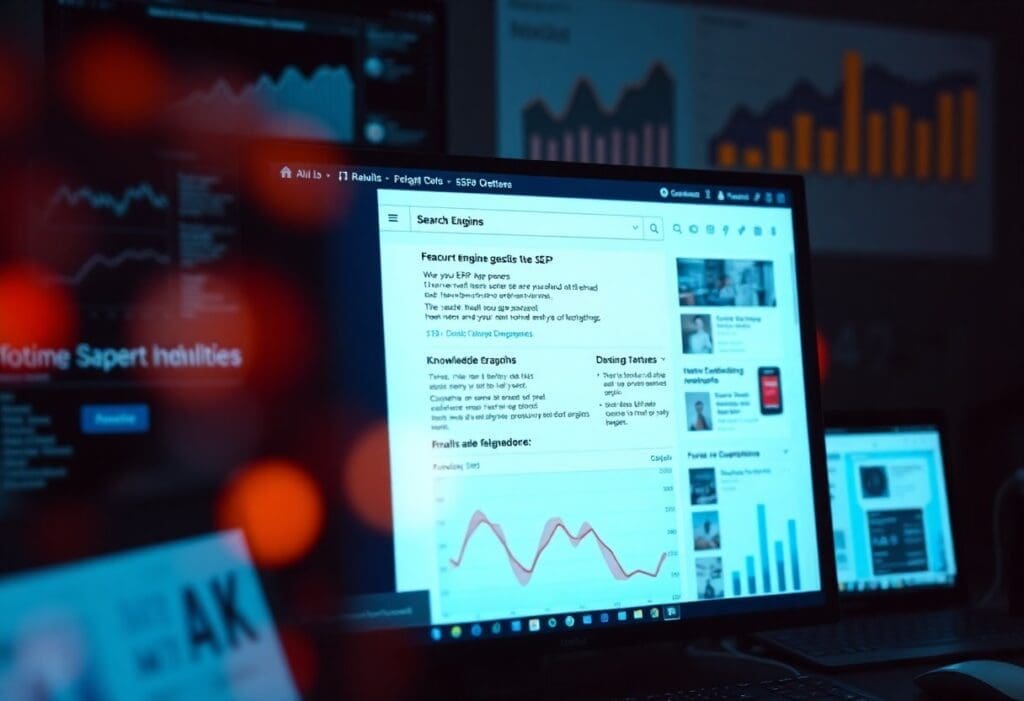As search engines continue to innovate, new features and trends are shaping the way users interact with search results. And in recent years, Search Engine Results Pages (SERP) features have become must-haves if you want to maximize your organic visibility.
In this blog post, we will overview what SERP features are and how to optimize for them.
Once you master what it takes to rank on SERP features, you’ll be able to better position your content and boost your overall traffic.
Let’s get to it!
SERP Features: What are They?
SERP features are dynamic components displayed alongside organic search results, such as snippets, knowledge panels, and local packs.
These elements enhance the user experience by providing quick access to information.
It’s important for you to understand SERP features if you want to get your Search Engine Optimization (SEO) right.
They heavily influence how users interact with search results and can significantly impact your website’s traffic and reach.
Why SERP Features Are So Important
On a fundamental level, these features provide users with additional context or capabilities beyond traditional “blue links.”
Users are very likely to interact with them, so you need to focus on being there.
By optimizing for these features, you improve your chances of capturing user attention, building credibility, and ultimately driving more traffic to your site.
Types of SERP Features
Here’s a breakdown of the most common SERP features you will encounter online:
| Type of SERP Feature | Description |
|---|---|
| Featured Snippets | Highlights of selected answers from web pages for quick access |
| Knowledge Panels | Information boxes that provide summary insights about entities |
| Local Packs | Local business listings based on geographic search |
| Image Packs | A set of images related to a search query |
| Video Results | Embedded video content directly in search results |
SERP features are constantly evolving, so you’ll want to stay informed as they do.
Here’s an example of a Local Pack for “Dim Sum near me”:

Here are some additional types of SERP features you should be aware of:
| Type of SERP Feature | Description |
|---|---|
| Top Stories | Highlights of trending news articles relevant to your query |
| People Also Ask | A list of related questions that users commonly search |
| Sitelinks | Shortcuts to specific pages within your domain under a main listing |
| Shopping Results | Showcase of product links for eCommerce queries |
| Rich Snippets | Enriched results featuring ratings, reviews, or images related to your content |
Here’s an example of a “People also ask” featured snippet about…you guessed it…featured snippets.

As you can see, there are numerous types of snippets you might want to pursue.
You’ll need different strategies for each of them. Be sure you fully understand them before diving in.
Emerging Trends in SERP Features
SERP features continue to showcase new trends that reflect user behaviors and preferences.
As this evolution continues, we should expect to see further integration of AI-driven results.
This will have personalized experiences and interactive content catering to specific queries layered on top of it.
These changes will provide opportunities for businesses like yours to adapt and optimize your online presence, helping to capture audience attention more effectively.
Once you understand these trends, you’ll be positioning your brand better in the search results.
Voice Search Optimization
Along with text search, voice search is rapidly gaining traction, altering how users interact with search engines.
To optimize for this trend, focus on conversational keywords and long-tail phrases that reflect the way people naturally speak.
Create content that answers common questions succinctly.
This can significantly enhance your visibility in voice search results, ensuring you meet your audience where they are.
Visual Search and Image-Based Results
Visual search is at the forefront of emerging search trends, because it allows users to search for information using images instead of text.
This shift means that you should prioritize optimizing your images. Use only high quality visuals, and add long-tail keywords to filenames and alt-texts.
As visual search technology matures, this SEO strategy will be able to drive significant traffic and better engage visually-oriented consumers.
Tools like Google Lens and Pinterest Lens can help you understand how users are interpreting your images in search contexts.
And don’t forget that they’ll be accessing images on multiple devices and platforms. Responsive design is more important than ever.
The Role of AI in SERP Features
AI technologies are revolutionizing how search engines display information.
As we can already see with Google AI Overviews, this is here to stay. And SERP features are no exception to this trend.
From rich snippets to knowledge panels, AI helps deliver more relevant information in your search queries.
In turn, these improvements serve to enhance user experience and interaction.
By understanding of these dynamics you will be able to optimize your content for better visibility moving forward.
AI-Powered Predictions
With the rapid advancements in artificial intelligence, search engines can now forecast user intent more effectively.
AI algorithms analyze vast amounts of data to tailor search results based on user behavior and preferences.
This leads to more accurate predictions of what users might be looking for. It also enables a more personalized and efficient search experience.
With these insights, you can refine your strategies to target specific user needs.
Content Optimization Strategies
Focus on producing high-quality, relevant content based on AI-driven insights about user intent and preferences.
Regularly update your content to align with changing trends and queries. This is the way to ensure that your website remains competitive and optimized for AI algorithms.
And don’t get me wrong — you still need to do the old school SEO basics, like keyword research, on-page SEO, etc. Those are still part of the game.
In the spirit of solving real user needs, you’ll want to do regular performance reviews for your content.
Figure out what they like, from topics to formats to media, and give it to them. Then, move on from things that aren’t landing with your target audience.
If users like your content, you’ll be feeding those engagement signals back to the search engines. And as fate would have it, you’ll be positioning yourself better for SERP features as well.
Optimization Tactics for SERP Features
Features such as Featured Snippets, Local Packs, and Knowledge Panels can significantly improve your chances of standing out in search results.
But how exactly can you get yourself to show up in any of these areas?
Your approach should focus on delivering quality content while aligning with the evolving preferences of search engines.
How to Structure Content for Featured Snippets
Start by structuring your content to answer common questions directly and succinctly.
Use clear headings, bullet points, and numbers to make your content scannable.
Focus on providing well-researched answers. Keep your sentences and paragraphs short.
And don’t forget to address the ‘who’, ‘what’, ‘when’, ‘where’, and ‘why’ to meet user intent clearly.
Local SEO Strategies
To optimize for local SERP features, get your business is listed on Google Business Profile (GBP) — formerly branded as Google My Business — and optimize that page.
You’ll also need to include your NAP (name, address, phone number), earn local backlinks, and pursue positive reviews to boost your chances of showing up higher on the local packs.
Consider optimizing your website with localized keywords that reflect the specific areas you serve.
Use schema markup to provide search engines with structured data about your business, including address and contact information.
While there has been recent speculation about how much search engines still use schema (due to abuse in recent years), you have nothing to lose by deploying it.
Conclusion: Go Get Some SERP Features!
So now you know what SERP features are as well as a few basics about how to position yourself for placement in them.
Of course, we could probably write a complete post about each type of SERP feature, and maybe we will in the future.
For now, get your local SEO in order, pivot your content to provide answers to real user queries, and markup your site well with Schema.
Those strategies will take care of 90% of the effort. And they will help you with SEO as a whole, as well as Answer Engine Optimization (AEO) as an added benefit.
It’s a Win-Win! Now go get you some of those rich snippets and other features. It’s there for the taking.
Tommy Landry
Latest posts by Tommy Landry (see all)
- Local SEO Meets AEO and GEO: How AI Platforms Read Local Authority Signals - December 9, 2025
- What Is an SEO Proposal and What Should It Include? - December 2, 2025
- The Complete Guide to Dental SEO: How Dentists Can Attract More Local Patients Online - November 25, 2025





